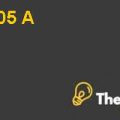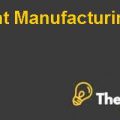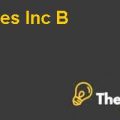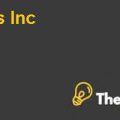Introduction
Groupe Schneider was founded in the early years of the 19thcentury by the Schneider family. The company operates in industrial engineering equipment, automation, electrical distribution, and industrial control and is also known as one of the major players around the world. The company is spread across one-hundred and thirty countries and its headquarters are in Paris. Its total number of employees are around sixty-three thousand. Based on the sales that the company made in the year 1996, it is the 14th largest industrial company in France. In terms of industrial control and low-voltage equipment, it is currently the leading producer globally. In terms of high and medium voltage equipment, the company ranks in the fourth place globally.
In the year 1996, the sales of the company increased with a percentage of 4.6 in comparison to the last year and reached 61.6 billion francs. Sixteen percent of the total common shares of Groupe Schneider are owned by its five top investors and almost 74 percent of its shares are held by the general public.
Groupe Schneider is organized on two bases, i.e. products and regions. Its product managers are responsible for marketing and its research and development. On the other hand, its regional managers are responsible for its sales.
Groupe Schneider-Economic Value Added & The Financial Performance Harvard Case Solution & Analysis
Case Overview
In order to encourage the culture that promotes stronger value creation, the company has implemented a new system for performance measurement and this system is based on economic value added. This case study evaluates the difficulties that the CFO of the company went through in order to implement this new performance measurement system. The problems were created because of the difficulties arising in implementing the model in such a large organization and because of the use of the system in compensation of the management. Other issues are related to importance of value creation, computation of economic value added, its implementation, and the cost of capital.
Analysis
Question No. 1: Computation of Economic Value Added for the Year 1996
Economic Value Added measures the financial performance of the company on the basis of its residual wealth. It is also known as economic profit as it strives to get a hold of the true economic profit that the company. (investopedia, 2018)
The computation of economic value added is done for the year 1996 and is shown in exhibit 1. The formula used for the calculation is as follows.
EVA = NOPAT - Invested Capital * WACC
Where,
NOPAT is the Net Operating Profit after Tax and is computed after deducting the effect of goodwill from Net Income.
Invested Capital is computed by deducting the current liabilities from total assets.
WACC is the weighted average cost of capital and it is equal to 15 percent.
The result obtained is a negative of 2596.3 million francs. This can be evaluated as Groupe Schneider needs to analyze and restructure its operating processes and different expenses as currently, it is not generating healthy revenues.
Question No. 2: Computation of Market Value Added for the Year 1996
Market Value Added reveals the difference between the capital invested by the investors in the company and the current market value of the company. The MVA of a company represents the capacity that a company holds in order to increase its shareholders value. (investopedia, Market Value Added - MVA, 2018)..........
This is just a sample partical work. Please place the order on the website to get your own originally done case solution.













